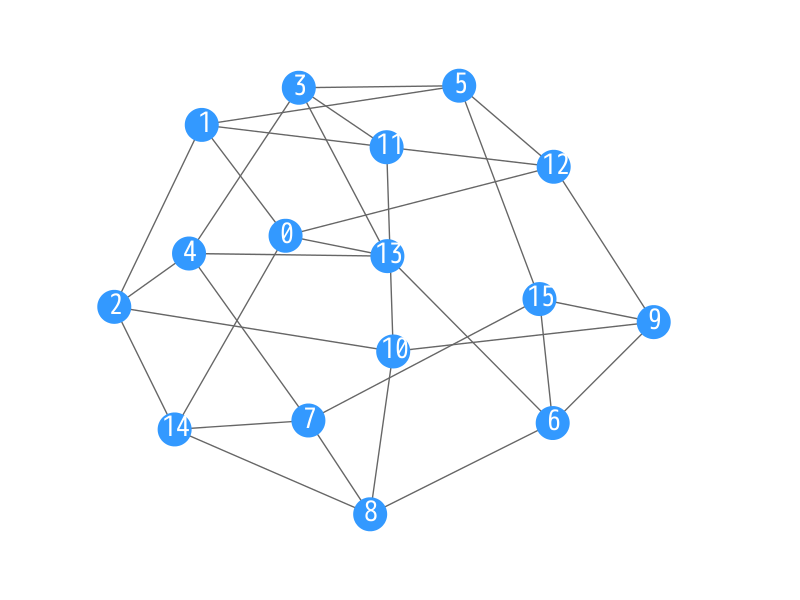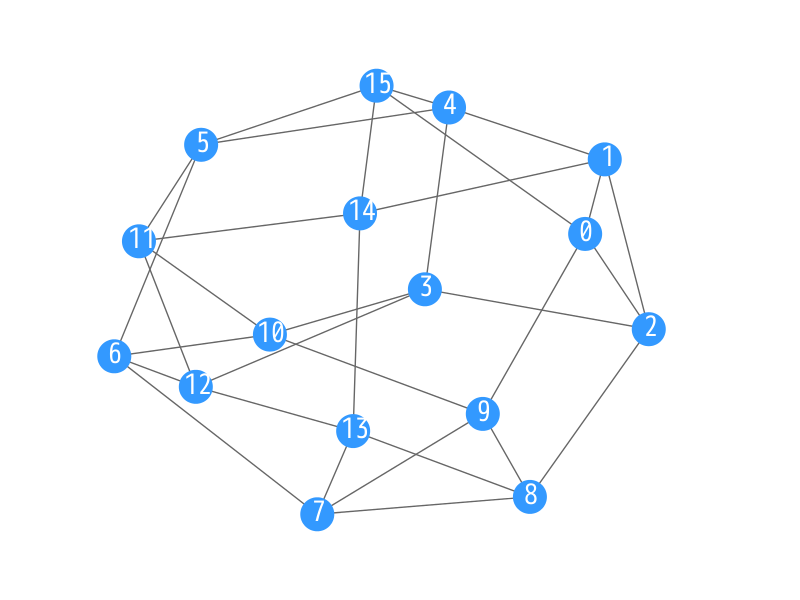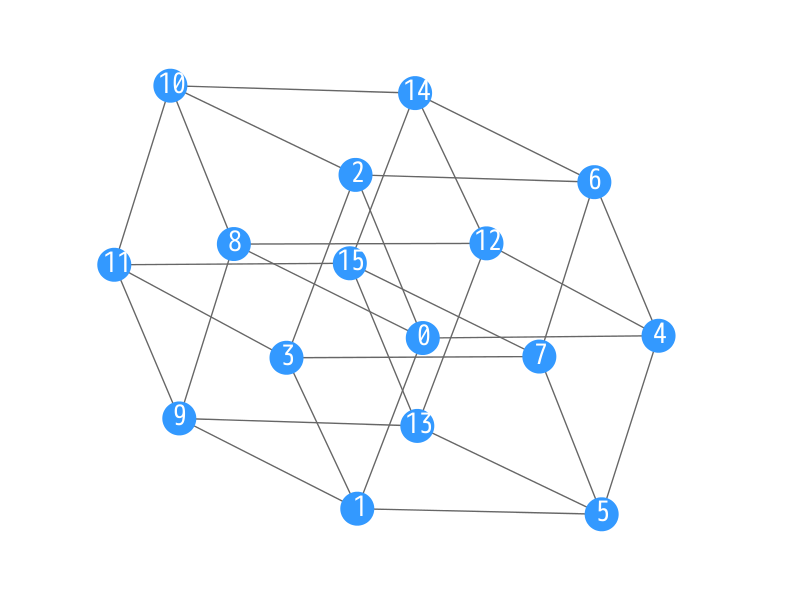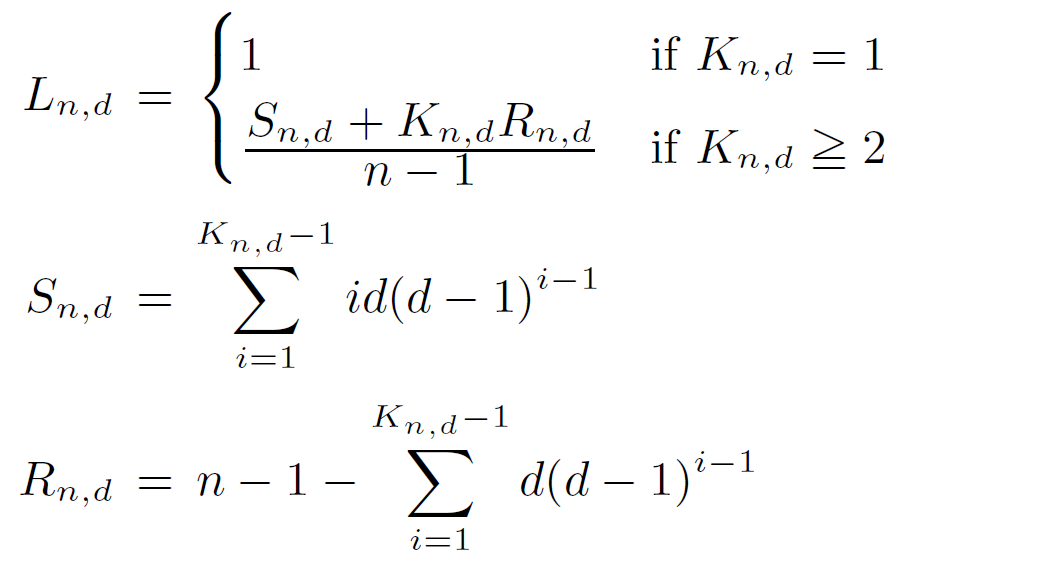Problem statement
Update 2021-04-20
Definition
The order/degree problem with parameters n and d: Find a graph with minimum diameter over all undirected graphs with the number of vertices = n and degree ≤ d. If two or more graphs take the minimum diameter, a graph with minimum average shortest path length (ASPL) over all the graphs with the minimum diameter must be found.
The order/radix problem on a host-switch graph with parameters n and r: A host-switch graph represents a network topology of computer systems with 1-port host computers and r-port switches. Formally, a host-switch graph is a 3-tuple G=(H, S, E) with integer parameters n ≥ 3, m ≥ 1, and r ≥ 3 where
- H = {h0 , h1 , ..., hn-1} is a set of n elements called host vertices (or simply hosts),
- S = {s0 , s1 , ..., sm-1} is a set of m elements called switch vertices (or simply switches), and
- E ⊂{{si , sj} | si , sj ∈ S} υ {{hi , sj} | (hi ∈ H) ∧ (sj ∈ S)} is a set of elements called edges.
Example
Let us show examples for the order/degree problem with parameters n = 16 and d = 4. The figure illustrates three examples of 4-regular graphs with 16 nodes. The diameter of the first and the second graphs is 3, while that of the third one is 4. Thus, we should select the first or the second one. Next, we compare the average shortest path length (ASPL) of those two graphs. Since the ASPL of the first one is smaller, this is the best solution of the problem among the three.

|
|
|
|
| Graph |

|

|

|
| Diameter | 3 | 3 | 4 |
| ASPL | 1.942 | 1.983 | 2.133 |

Why order/degree problem? Why order/radix problem?
Graph design has a rich variety of application fields of computer systems. In particular, it is just meeting a network design of future supercomputers and future high-end datacenters in terms of hop counts [SOCC11] [ISCA12] [SC14], [TPDS19], since their networks are topologically modeled as undirected regular graphs or host-switch graphs. Low latency is preconditioned on small hop counts, but existing network topologies have hop counts much larger than theoretical lower bounds. Therefore, computer network designers desire to find a graph that has a small number of hops between any pair of vertices.
Why not degree/diameter problem?
The degree/diameter problem (DDP) has been studied for decades and consists in generating the largest possible graph given degree and diameter constraints, striving to approach theoretical upper bounds [DDP-wiki]. However, DDP solutions may not be directly usable for network topologies in supercomputer and high-end datacenter systems because they are for particular number of compute nodes, whereas the number of nodes in a real system is determined based on practical considerations, e.g., budget.
Lower bound of diameter & ASPL
For a general graph with order n and degree d, the lower bound Kn,d on diameter k is computed as 
Similarly, the lower bound Ln,d on ASPL l is computed as 
For a host-switch graph with order n and radix r, lower bounds on h-diameter and h-ASPL can be computed by the algorithm shown in [TPDS19]. We employ these lower bounds for the host-switch graph category of the competition.
Programs for calculating those lower bounds are provided below.
Programs
A Python script that generates a regular random graph and calculates its diameter and ASPL is provided here. This may be a good starting point if you are new to creating graphs.
-
create-random.py (requires NetworkX)

For a faster calculation of ASPL, a C++ program was developed by Ryuhei Mori, and an MPI-based parallel program was developed by Masahiro Nakao.
A C++ program that generates a random host-switch graph and the lower bound. Another C++ program that calculates h-diameter and h-ASPL of a given host-switch graph are developed by Ryota Yasudo.